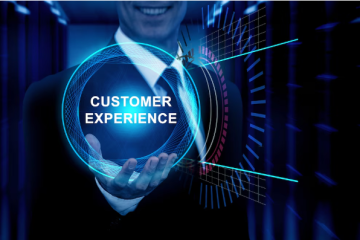Introduction
In today’s digital landscape, video content has become one of the most powerful tools for businesses to engage audiences, build brand awareness, and drive sales. The rise of video-sharing platforms like YouTube, TikTok, and Instagram, as well as the increasing consumption of video content, make it a crucial element in any marketing strategy. However, creating a successful video content strategy requires more than just a camera and creativity—it requires careful planning, execution, and optimization.
This is where artificial intelligence (AI) comes into play. AI technology is revolutionizing the way businesses create, manage, and optimize video content. With AI-driven tools, brands can generate videos more efficiently, analyze viewer engagement, and refine their content strategy to target the right audience. In this article, we’ll explore how to create a video content strategy using AI, providing insights into its benefits and practical tips to enhance your video marketing efforts.
1. Why AI Matters in Video Content Strategy
Before diving into how to use AI for video content strategy, it’s important to understand why AI is such a game-changer in this space. AI technology offers numerous benefits that improve both the quality and efficiency of video production and distribution.
a. Enhanced Efficiency and Automation
One of the main advantages of AI is its ability to automate repetitive tasks. In video content production, this can mean automating video editing, content creation, and even generating video scripts. By reducing the time spent on mundane tasks, creators can focus on more strategic elements like creativity and audience engagement.
b. Personalization and Audience Targeting
AI allows businesses to personalize video content for specific audiences. With tools that analyze viewer data and behavior, AI can recommend personalized content, helping you target different segments of your audience with more precision. This personalization boosts engagement and ensures that the right message reaches the right viewers.
c. Data-Driven Insights
AI-powered analytics provide deep insights into how video content is performing. With tools that track engagement, retention rates, and audience demographics, businesses can make data-driven decisions to optimize their video content strategy, improve their reach, and enhance the viewer experience.
d. Cost-Effective Production
AI tools can reduce the cost of video production by automating many of the processes that traditionally required human intervention. This can include generating video clips, transcribing videos, or even adding captions automatically. AI can also recommend the best times to post content based on audience behavior, maximizing your video’s impact without the need for a large production budget.
2. Using AI for Video Content Creation
Creating engaging video content is the core of any video strategy. AI-driven tools can simplify and streamline this process, helping you create professional-quality videos even with limited resources. Below are some of the key ways AI can be leveraged in the video creation process:
a. AI-Generated Scripts and Storyboards
One of the most time-consuming parts of video production is scriptwriting. AI tools like Copy.ai, Writesonic, or ChatGPT can generate video scripts based on the prompts and guidelines you provide. These tools can draft narratives, suggest headlines, or even create dialogue, saving time and offering creative ideas.
Similarly, AI-driven platforms like Storyboard can help generate storyboards based on your script. These tools allow you to visualize your video concept before filming, making it easier to plan shots, transitions, and overall flow.
b. AI-Powered Video Editing
Video editing is another area where AI can significantly enhance productivity. AI video editor uses machine learning to automatically edit video footage, adding transitions, effects, and music. These platforms analyze the footage and determine the best way to assemble the content, ensuring smooth and professional output without needing a human editor.
AI video editing tools can also help with tasks like color correction, background noise reduction, and even automating subtitles or translations, making it easy to produce videos for a global audience.
c. AI-Powered Voiceovers and Animation
Incorporating voiceovers and animations in video content has become a popular trend, and AI makes these tasks more accessible. Tools like Lovo.ai and Replica Studios allow businesses to generate AI-powered voiceovers that sound natural and engaging. Whether it’s narrating explainer videos, providing product descriptions, or adding commentary, AI-generated voices save time and cost.
AI-powered platforms like Animoto or Pictory enable users to create animations or transform text into videos. These tools automate the process of creating explainer videos, product demos, and marketing materials by using AI-generated visuals and text overlays that enhance the viewer’s experience.
3. Optimizing Video Content with AI Analytics
Once you’ve created your video content, optimizing it for your audience is crucial to the success of your video marketing strategy. AI provides powerful analytics tools that can offer insights into viewer behavior, content performance, and more.
a. Audience Segmentation and Personalization
AI-powered platforms can analyze audience data and segment viewers based on behavior, interests, demographics, and other factors. This allows businesses to create personalized video content that resonates with each segment of their audience. Tools like Vidooly and TubeBuddy analyze viewer data to recommend video topics, styles, and formats that are likely to attract and engage specific segments of your audience.
b. Predictive Analytics for Content Strategy
Predictive analytics powered by AI can forecast which types of content are likely to perform well based on historical data and market trends. By analyzing engagement metrics, past video performance, and social media interactions, AI can suggest the optimal content strategy moving forward. This ensures you’re producing videos that are relevant to your audience and maximize engagement.
c. Optimizing Video Titles, Thumbnails, and Descriptions
AI tools like VidIQ and TubeBuddy can help optimize key elements of your video content, such as titles, thumbnails, and descriptions. These platforms analyze video metadata and recommend changes to improve search engine optimization (SEO) and increase click-through rates. By suggesting the most effective keywords and tags, AI helps ensure your videos are easily discoverable on platforms like YouTube.
d. Real-Time Performance Tracking
AI analytics tools provide real-time tracking of video performance. Platforms like Google Analytics and YouTube Analytics offer insights into viewer retention, engagement rates, and conversion metrics. AI tools can analyze this data and recommend adjustments to your video strategy in real time, ensuring your content is always optimized for maximum impact.
4. AI for Video Distribution and Promotion
Once your video content is created and optimized, AI can also play a critical role in distributing and promoting it to your target audience. The ability to target the right audience with precision and scale is one of AI’s biggest strengths.
a. AI-Driven Content Distribution
AI tools can automate video distribution across multiple platforms, ensuring your content reaches the widest possible audience. Tools like Hootsuite or Buffer leverage AI algorithms to analyze when your audience is most active and schedule videos for the best times. This automated scheduling saves time and maximizes exposure.
b. Social Media Promotion and Ads
AI-driven platforms like Facebook Ads and Google Ads help businesses run targeted video ad campaigns by analyzing audience data, behaviors, and preferences. These platforms use AI to automatically optimize ad spend, adjust targeting, and analyze which video ads perform best, giving you the best return on investment.
c. Engaging Viewers with AI Chatbots
Engagement doesn’t stop when a video ends. AI-powered chatbots can engage with viewers post-video, answering questions, collecting feedback, and even suggesting additional content to watch. Chatbots can be integrated with video platforms to continue the conversation with viewers, creating a more interactive and engaging experience.
Conclusion
The integration of AI into video content strategy is transforming how businesses create, optimize, and promote their videos. By leveraging AI-powered tools, businesses can streamline their video production processes, personalize content for different audience segments, and gain valuable insights through data-driven analytics. From AI-driven video editing and voiceovers to predictive analytics and content distribution, AI offers a suite of solutions that improve efficiency, reduce costs, and enhance the impact of your video marketing efforts.
Whether you’re a small business owner or part of a large enterprise, incorporating AI into your video content strategy will help you stay ahead of the competition, improve your audience engagement, and ultimately, drive success in your digital marketing initiatives.



